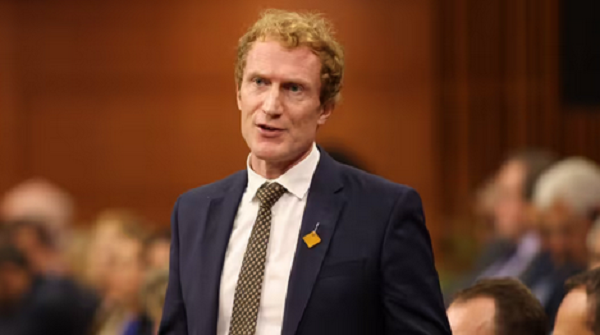Traders worry as 32-hour central banking spree hangs over markets
Investors begin the week desperate for answers to questions about the near-term path of global monetary policy after conflicting signals from key economies upended markets.
Major central banks are set to meet in Tokyo and Washington on Wednesday and London on Thursday, with traders struggling to decide if the Bank of Japan will hike interest rates and then when and by how much the U.S. Federal Reserve and Bank of England will cut them.
At stake are recent surges in the yen and pound, as well as the decline of short-term U.S. Treasury yields. Multiple markets ended last week looking jittery due to the uncertain outlooks for policy and economic growth.
“This week will be more interesting,” said Wong Kok Hoong, the head of institutional equities sales trading at Maybank Securities Pte. in Singapore. “And maybe more tiring.”
Here’s a guide for traders to this week’s central bank action:
Bank of Japan
There’s uncertainty in markets about what the Bank of Japan will do after years in which it rarely touched rates.
Governor Kazuo Ueda is setting a personal record for a lack of public comments before a policy meeting, and the latest economic data has shown inflation accelerating but consumer spending disappointing.
The assumption that further policy tightening is possible sent the yen racing higher last week. The currency has strengthened by about five per cent against the dollar since July 11, helped in part by suspected intervention as authorities tired of currency weakness.
Underscoring the uncertainty, option trader bets on a rate hike lurched from below 40 per cent to nearly 90 per cent last week before settling about somewhere in between. Economists were equally uncertain with just 30 per cent forecasting an increase, but more than 90 per cent seeing one as a risk, according to the latest Bloomberg survey.
The interconnectedness of the yen to a host of leveraged investments via carry trades, where the Japanese currency is borrowed and used to buy higher-yielding assets, has shown sharp swings can quickly ripple through global markets. The currency’s recent climb laid waste to popular currency strategies on everything from the Australian dollar to the Mexican peso.
Inaction from Ueda would leave yen bulls vulnerable, especially if policymakers also disappoint expectations for a sizable cut to bond purchases. But currency bears are under threat if the Fed does anything later Wednesday to accelerate hopes for U.S. rate cuts in the coming months.
“I’m still in the yen bear camp, although there are massive two-way risks going into the big week,” said Charu Chanana, head of FX strategy at Saxo Capital Markets. “Expecting the BOJ to hike rates and tweak its bond buying both in a single meeting seems to be a stretch for a central bank that is inherently dovish by nature.”
Federal Reserve
Investors will scour the Fed’s policy announcement and Chair Jerome Powell’s remarks on Wednesday for anything that supports expectations for a first interest-rate reduction in September.
Such a move would align with the view of economists and swaps traders, who are fully pricing in at least two quarter-point cuts this year. The Fed’s benchmark is now in a range of 5.25 to 5.5 per cent, a peak reached a year ago,
Policymakers have been pointing out a balanced labor market and ebbing inflation for several weeks, an indication they see a growing case for lower borrowing costs in the world’s top economy.
“The upcoming FOMC will be used to lay the groundwork for a September rate cut as the Fed makes the case for moving policy from restrictive territory toward a more neutral footing,” said James Knightley, chief international economist at ING.
Some market watchers — from former New York Fed president William Dudley to Mohamed El-Erian — have even laid out the case for more-aggressive easing than what’s currently expected. In separate Bloomberg Opinion columns, Dudley said the Fed should consider reducing rates this week and El-Erian warned of a “policy mistake” if the central bank keeps rates too high for too long.
Treasuries are on pace to end July with a three-month winning streak last seen in mid-2021. Rising conviction surrounding rate cuts helped a Bloomberg index of U.S. government debt touch a two-year high this month. Two-year yields have declined on the bet easier monetary policy is coming, leading to a narrowing of the gap with 10-year notes.
U.S. stocks, however, enter the week on somewhat shakier footing, in part because several corporate earnings reports raised doubts over the strength of consumers. The S&P 500 Index on Wednesday ended its longest stretch without a two per cent decline since the start of the global financial crisis in 2007.
A look at the volatility market shows just how important the week — which will also feature a US jobs report and corporate results from Meta Platforms Inc., Microsoft Corp. and Apple Inc., among others — is for traders.
A gauge of implied price swings in the S&P 500 in the next week jumped to almost one point above the expected volatility two weeks from now, a signal that the here-and-now uncertainty is higher than that further down the line.
Bank of England
Markets are split on whether the Bank of England will deliver its first rate cut since the pandemic on Thursday, lopping it from the current 5.25 per cent.
While inflation has eased from double digits a year ago to the central bank’s two per cent target, unemployment is up, price growth in the services sector is still running high and the economy has bounced back from a small recession. A 10 per cent rise in the minimum wage in April, and the new Labour government’s plan to increase it alongside above-inflation pay rises for as many as 5 million public sector workers, pose upward risks to prices.
Since the July election, three of the Monetary Policy Committee’s hawks have set out the case against easing. Just one of the two doves has made the opposite argument.
Whatever the outcome, the decision will likely have an impact on bonds and the pound. On Friday, swaps priced about a 50 per cent chance of a quarter-point reduction this week with two such moves this year seen as a near certainty.
Economists think the BOE will shift. Bank of America Corp., Deutsche Bank AG and Nomura Holdings Inc. see policymakers dividing five to four in favor of cutting this month. ING Groep NV expects six to back action. Bloomberg Economics also predicts a reduction.
“In what is a big week in terms of important data points, the BOE meeting on Aug. 1 is very much live and comes with updated forecasts,” said Orla Garvey, senior portfolio manager for fixed income at Federated Hermes Limited.
A rate cut would boost U.K. government bonds, which have already been buoyed by prospects of monetary loosening and hopes of political stability after the landslide election victory for the Labour Party. The yield on two-year gilts is at the lowest in more than a year.
For the pound, a rate cut isn’t as beneficial because it would reduce its appeal as part of the carry trade. Sterling is the best performer in the Group-of-10 this year and big banks and investors including JPMorgan Chase & Co. and Amundi forecast further gains to US$1.35, an almost five per cent advance from current levels. Bullish bets are at the highest on record.
What Bloomberg’s strategists say…
“Recent market turbulence has unsurprisingly fomented a number of narrative cross-currents pertaining to equities, fixed-income, and other market positioning. It may be dangerous to say, but in some ways this time really is different to what we’ve seen before.”
— Cameron Crise, macro strategist
With assistance from Winnie Hsu, Aline Oyamada, Philip Aldrick, Steve Matthews and Elena Popina
This article was first reported by BNN Bloomberg













